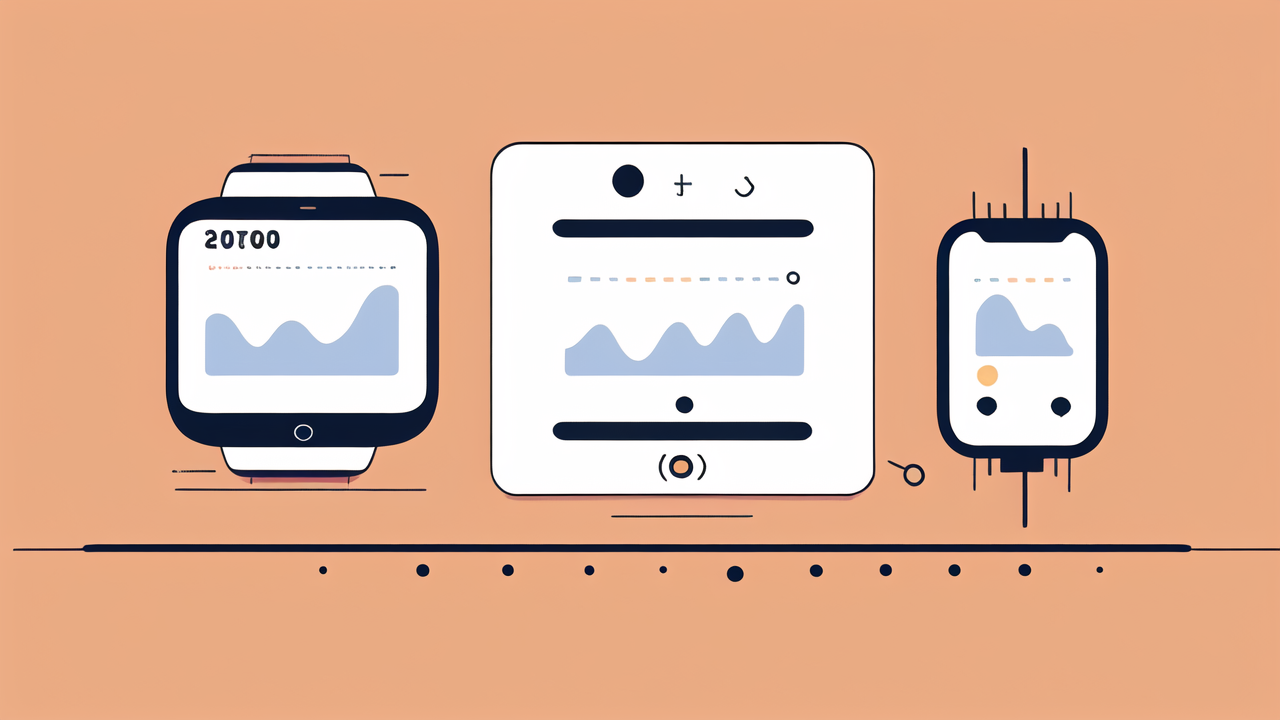The History of Fitness Wearables in the United States
The Origins of Pedometer Watching
Pedometers have a long history in the US. They first appeared in the 1960s as simple step counters. These devices used mechanical sensors to track movement. Early models were bulky and not very accurate. They could only count steps and estimate distance walked.

Despite their limitations, pedometers were popular among fitness enthusiasts. They offered a way to measure daily activity. This was a big step in quantifying personal fitness. Pedometers helped people set and track walking goals. They encouraged users to be more active in their daily lives.
Over time, pedometers became more advanced. Digital displays replaced mechanical ones. Accuracy improved with better sensors. By the 1990s, pedometers were common tools for fitness tracking.
Milestones in Fitness Watch Development
The 1970s saw the introduction of heart rate monitors. These devices used chest straps to measure heart rate. They were popular among athletes and serious fitness buffs. In the 1980s, Polar launched the first wireless heart rate monitor.
The 1990s brought GPS technology to fitness watches. This allowed for more accurate distance and pace tracking. Garmin released its first GPS watch in 2003. It was a game-changer for runners and cyclists.
In 2009, Fitbit launched its first clip-on tracker. It could measure steps, calories burned, and sleep quality. This marked the beginning of the modern fitness tracker era. Other companies soon followed with their own devices.
The Digital Revolution: Transition from Analog to Smart Devices
The shift from analog to digital devices was a major turning point. Digital displays allowed for more data to be shown. Memory functions let users store and review their fitness data.
Smart devices took this further. They added features like smartphone connectivity and touchscreens. The Apple Watch, launched in 2015, was a milestone in smart fitness tech. It combined fitness tracking with broader smartwatch features.
This digital revolution made fitness tracking more accessible. Devices became smaller, more accurate, and easier to use. They could track more metrics and provide deeper insights. This helped users make better decisions about their health and fitness.
Current Trends in Fitness Wearables
Advanced Smart Watch Features and Capabilities
Modern fitness watches are packed with features. They go far beyond simple step counting. Here are some key capabilities:

- Heart rate monitoring
- GPS tracking
- Sleep analysis
- Stress level measurement
- Blood oxygen monitoring
- ECG readings
- Workout tracking for multiple sports
These devices can track dozens of different activities. They provide detailed metrics for each workout. Many can automatically detect when you start exercising. This makes tracking seamless and effortless.
Water resistance is now standard. This allows for swim tracking and all-day wear. Battery life has improved greatly. Many watches can last a week or more on a single charge.
Integrating AI and Machine Learning for Personalized Fitness
AI and machine learning are changing the game in fitness tech. These technologies allow for more personalized insights. They can analyze patterns in your data to provide tailored advice.
For example, some watches can suggest recovery times based on your workouts. They can adjust your training plans based on your progress. AI can also help detect potential health issues early.
Machine learning algorithms can identify your fitness level. They use this to set appropriate goals and challenges. This helps keep users motivated and prevents burnout.
These technologies also improve the accuracy of fitness tracking. They can better distinguish between different activities. This leads to more precise calorie burn estimates and workout analysis.
The Role of Mobile Apps and Community Connectivity
Mobile apps are crucial to the modern fitness watch experience. They provide a user-friendly interface for viewing data. Apps allow for deeper analysis of fitness trends over time.
Many apps include social features. Users can connect with friends and join challenges. This adds a fun, competitive element to fitness tracking. It can boost motivation and accountability.
Community features also allow users to share achievements. They can get support and advice from others. This creates a sense of belonging and encouragement.
Apps often integrate with other health and fitness platforms. This allows for a more holistic view of your health. You can combine data from your watch, diet tracker, and other sources.
The Future of Fitness Technology
Innovations on the Horizon
The future of fitness tech looks exciting. We can expect to see even more advanced sensors. These might include:

- Continuous glucose monitoring
- Hydration level tracking
- More detailed sleep analysis
- Improved stress and mood tracking
Wearable tech may expand beyond watches. Smart clothing with built-in sensors could become common. These could provide more accurate data on movement and muscle activity.
We may also see more integration with home fitness equipment. Watches could connect to treadmills or bikes. This would allow for more immersive, data-driven workouts at home.
The Impact of Virtual Reality and Augmented Reality
VR and AR have huge potential in fitness tech. VR could create immersive workout experiences. Imagine running through virtual landscapes or joining virtual fitness classes.
AR could overlay fitness data onto your real-world view. This could be useful for runners or cyclists. It could show pace, heart rate, and route information in real-time.
These technologies could make fitness more engaging and fun. They could help motivate people to stay active. VR and AR could also improve form and technique in workouts.
Privacy and Ethical Considerations in Fitness Data Collection
As fitness devices collect more data, privacy concerns grow. Users need to trust that their personal health data is secure. Companies must be transparent about how data is used and stored.
There are also ethical questions to consider. How should fitness data be used in healthcare? Should insurance companies have access to this data? These are complex issues that need careful thought.
Balancing innovation with privacy protection will be crucial. The future of fitness tech must prioritize user trust and data security. Only then can we fully realize the potential of these powerful tools.




Leave a comment
This site is protected by hCaptcha and the hCaptcha Privacy Policy and Terms of Service apply.